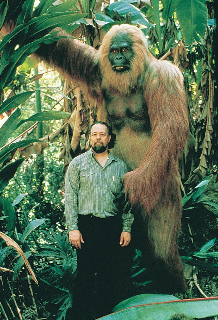
July 14, 2008

William Munns and his reconstruction of Gigantopithecus.
The famed recreator of Gigantopithecus, artist Bill Munns has opened a new window into his world and what we find inside is filled with wonders to behold. Bigfoot. Mokele-Mbembe. Saber-toothed Cats. A cryptozoo, indeed.
Munns has shared with me his news that he has uploaded and opened his Bill Munns Creature Gallery.
His continuingly upgraded site, Bill Munns Creature Gallery, represents 35 years of his work in varied fields of movie makeup effects, museum exhibit models, theme park robotics, and paleontology studies that have also included visualizations of prehistoric wildlife.
As he points out, most recently, Munns’ knowledge of fabricating creature suits has been “applied to the analysis of the classic cryptozoological mystery seen in the famous 1967 Patterson Film, and the debate of whether the figure in that film is a real Bigfoot or a human in a fabricated fur suit.”
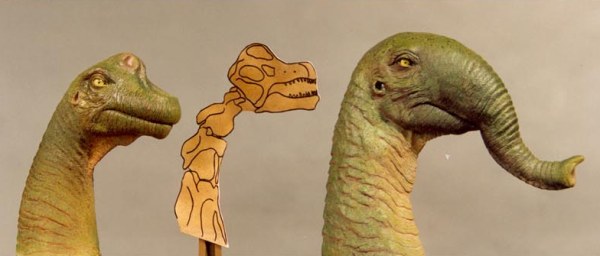
Munns also spends some time exploring an issue that directly impacts on another area of some import to cryptozoology – the possible existence of what he entitles, The Sauropod’s Trunk.
In an innovative and thoughtful bit of lateral reconceptualizing, Munns takes the past reconstructions of some dinosaurs and rethinks them.
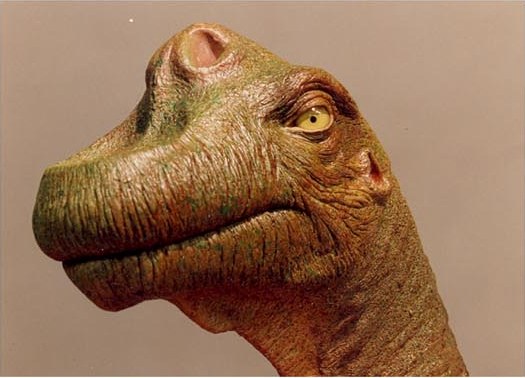
He notes his “hypothesis is born out of the unusual position of the nares (nostril openings in the skulls) of the sauropods. In the Diplodocids, the opening is at the top of the skull, between the eyes, and the opening is flush with the skull’s surface in a non-descript fashion. In the Brachiosaurids, the opening is enormous, has a high arching delicate bone in the center along the medial line, and there is a massive concavity or recessed hollow in front of the openings and directly above the teeth. As different as they both are, they have one fundamental thing in common. In both cases, the nares are at the top of the skull instead of the normal pattern of being located at the front of the skull.
“In the matter of comparative anatomy with existent species, no existent skulls are identical, but two types do have nares at the top of the skull. One group are the cetaceans (porpoise and whales). The other are the Proboscidians (elephants).”
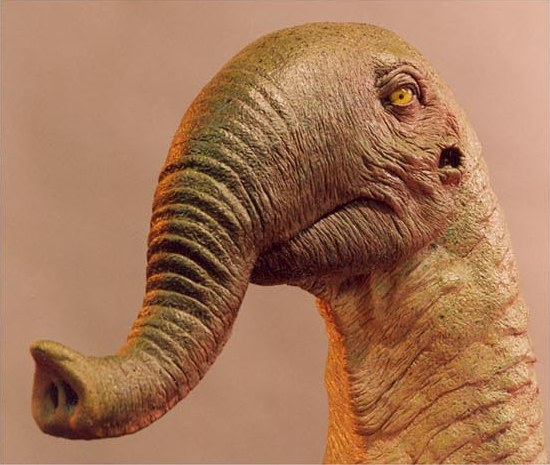
As Munns points out, interestingly, “in mammals, the presumption of a trunk is freely given to any skull with high nares.”
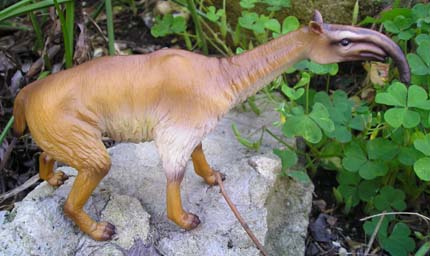
A macraucheniid litoptern produced by Schleich, pictured from Darren Naish’s private collection, and, of course, found in my International Cryptozoology Museum too.
As shown above in a model replica highly prized by myself and Darren Naish, there is a perfect instance of the trunk conception as evidenced in the fossil evidence in action.
Munns writes: “In mammalian paleontology, whenever high positioned nares are found in a skull, a trunk is presumed. And particularly, in the somewhat camel-like Macrauchenia, as described in R. Savage and M. Long’s book Mammal Evolution (pages 164 and 165), it says: ‘The cranium is short and the muzzle long with the nasal opening high on the roof of the skill (as in sauropod dinosaurs). Macraucheniids must have been very strange beasts – camel-like with a proboscis.'”
With regard to whether sauropods have trunks, Bill Munns’ rationalizations are solid, and his “vote is most emphatically yes to the trunk hypothesis.”
His imagery with regard to these dinosaurs is remarkable, as demonstrated by what he has allowed me to share on these pages.
In personal communication with Munns, this work might indeed have some relationship to the hunt for the supposed dinosaurs of the Congo, Mokele-Mbembe, as hinted in my headline. The artist has written me: “The sauropod trunk concept is interesting, in that if by some miracle, they do find a dinosaur in Africa, it might be a sauropod, and we might know the answer to the question. We can hope.”

Bill Munns works on the Gigantopithecus head.
Munns’ creations are fantastic, and just to move away from his Gigantopithecus and the sauropods for a moment, here are two samples of what he envisioned for two saber-toothed-appearing felines from the La Brea Tar Pits, Smilodon (a true saber-toothed cat of the Felidae, subfamily Machairodontinae) and Dinictis (a false saber-toothed cat of the Nimravid family).
I find Munns’ reconstructions of these cats quite beautiful:
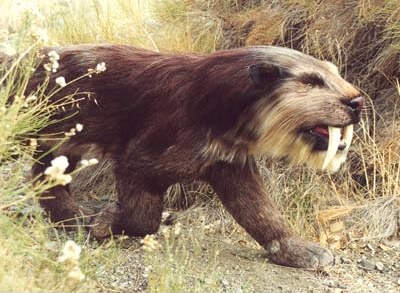


Go visit the “Bill Munns Creature Gallery” for more, including his thoughts and creature suit analyses on the Patterson-Gimlin Bigfoot film.
^^^^^^^^^^^^^^^^^^^^^^^^^^^^^^^^^^^^^^^^^^^^^^^^^^^^
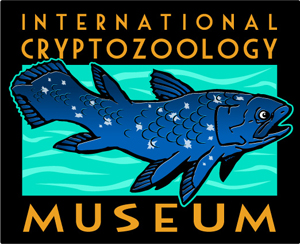
As of July 14th, over 150 different people have contributed (averaging a bit over $30 each), and the donation drive got off to a great start. Even two benefactors, at $1000 and $1050 pitched in, but donations have dropped off to nearly zero since July 3rd.
Please donate to the museum, and remember you may directly send a check, money order, or, if outside the USA, an international postal money order made out to the “International Cryptozoology Museum” ~ or in the spirit of this posting, send along your exhibition-quality models and replica animals and cryptids also as a donation – to the
International Cryptozoology Museum
c/o Loren Coleman
PO Box 360
Portland, ME 04112
Please “Save The Museum” (fuller details can be found by clicking there)! Easy-to-use donation buttons are now available here or merely by clicking the blank button below, which takes you to a donation site without you having to be a member of PayPal. Thank you, everyone!
About Loren Coleman
Loren Coleman is one of the world’s leading cryptozoologists, some say “the” leading living cryptozoologist. Certainly, he is acknowledged as the current living American researcher and writer who has most popularized cryptozoology in the late 20th and early 21st centuries.
Starting his fieldwork and investigations in 1960, after traveling and trekking extensively in pursuit of cryptozoological mysteries, Coleman began writing to share his experiences in 1969. An honorary member of Ivan T. Sanderson’s Society for the Investigation of the Unexplained in the 1970s, Coleman has been bestowed with similar honorary memberships of the North Idaho College Cryptozoology Club in 1983, and in subsequent years, that of the British Columbia Scientific Cryptozoology Club, CryptoSafari International, and other international organizations. He was also a Life Member and Benefactor of the International Society of Cryptozoology (now-defunct).
Loren Coleman’s daily blog, as a member of the Cryptomundo Team, served as an ongoing avenue of communication for the ever-growing body of cryptozoo news from 2005 through 2013. He returned as an infrequent contributor beginning Halloween week of 2015.
Coleman is the founder in 2003, and current director of the International Cryptozoology Museum in Portland, Maine.
Filed under Alien Big Cats, Artifacts, Breaking News, Cryptomundo Exclusive, Cryptotourism, CryptoZoo News, Cryptozoologists, Cryptozoology, Extinct, Fossil Finds, Living Dinosaurs, Megafauna, Men in Cryptozoology, Mokele-Mbembe, Museums, Pop Culture, Public Forum, Replica Cryptia